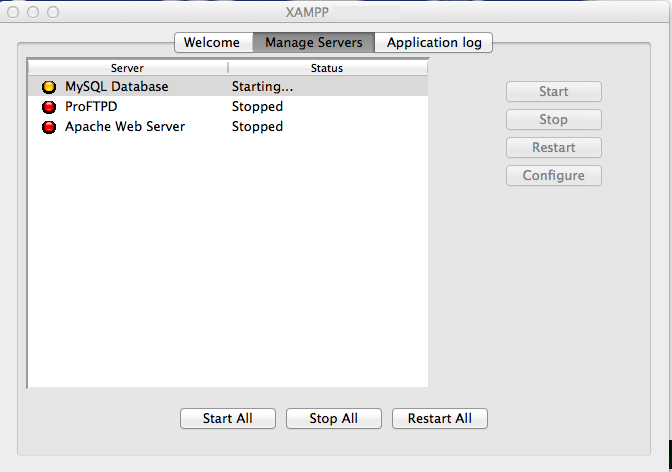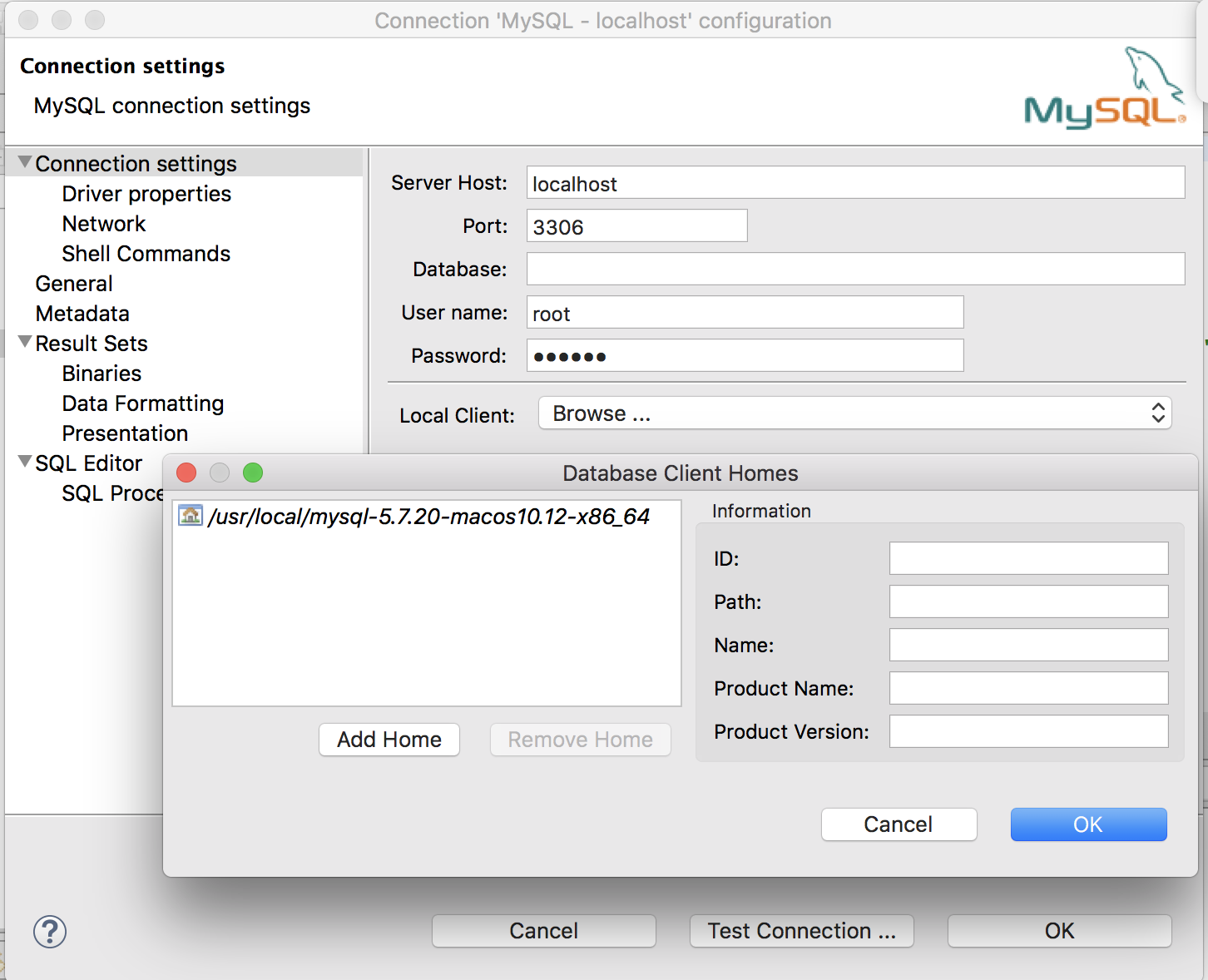

- Mysql for mac 10.11 how to#
- Mysql for mac 10.11 mac os x#
- Mysql for mac 10.11 mac os#
- Mysql for mac 10.11 install#
You can easily tell what it is from the Terminal cause it’s the name right before the dollar sign (e.g. My username is danilo, so replace danilo with whatever yours happens to be. To do this, you will need to know your username. htaccess file for those nice clean search engine-friendly URLs you’ll need to make sure mod_rewrite is working properly. If you’re like me and use rewrite rules in an. Save your changes like you did with the last file. Search for and uncomment: #Include /private/etc/apache2/users/*.conf In Terminal: sudo nano -w /etc/apache2/extra/nf When you are finished hit control x to exit, then type y, and hit return to save your changes. Hit control w again to search for: DirectoryIndex index.htmlĪdd the text “index.php” to the end of the line like so: DirectoryIndex index.html index.phpįinally, search for ( control w) and uncomment: #Include /private/etc/apache2/extra/nf If they are commented out, remove the pound sign in front of those lines as well. don’t have a pound sign in front of them): LoadModule authz_host_module libexec/apache2/mod_authz_host.so LoadModule authz_core_module libexec/apache2/mod_authz_core.so Make sure that these two lines are not commented out (i.e. Uncomment all three of these lines by removing the pound/hash sign (#) in front of the “LoadModule” text on each line. Hit control w and search for: #LoadModule userdir_module libexec/apache2/mod_userdir.soīelow that line should be: #LoadModule rewrite_module libexec/apache2/mod_rewrite.so #LoadModule php5_module libexec/apache2/libphp5.so Whenever you put sudo in front of a command you will need to enter your administrator/user password when prompted to do so. Set up Apache Enter the following into the command line/shell (Terminal): sudo nano -w /etc/apache2/nf Alternatively, for you lazy ones out there, you can just copy and paste these commands.

Whenever I ask you to type something into Terminal you have to hit return for the command to go through. I will be using the GNU nano text editor in my examples since it already comes with the Mac, but if you’d like to use another text editor like BBEdit or TextMate just replace nano with bbedit or mate respectively and remove any nano-specific options (e.g. Open up the Terminal application in /Applications/Utilities or if you prefer use iTerm.
Mysql for mac 10.11 install#
If you haven’t already, download and install Xcode. If you screw up my directions there are copies of the Apache configuration files you’ll be editing in /etc/apache2/original so don’t despair.
Mysql for mac 10.11 mac os#
Preparation Please be warned that I’m assuming you have a clean and updated install of Mac OS X, I doubt anything you do here can cause any serious damage but still remember to backup everything you modify.
Mysql for mac 10.11 mac os x#
While I’m a big fan of the nginx (pronounced: “engine x”) web server this tutorial uses Apache 2.4, which comes preinstalled on Mac OS X and has a larger market share. If you know what you’re doing this guide should also work for Leopard, Snow Leopard, Lion, Mountain Lion, and Mavericks with minor changes as the setup hasn’t changed much since I originally wrote about this in 2007. I should note I mainly program in Scala these days, but PHP is a really popular and useful programming language to know. This tutorial is a good reference for PHP developers who want to set up a local MAMP development environment.
Mysql for mac 10.11 how to#
This is a tutorial on how to set up Apache 2.4, PHP 5.5, and MySQL 5.6 on Mac OS X 10.10 Yosemite. How to set up Apache, PHP & MySQL on Mac OS X 10.11 El Capitan & OS X 10.10 Yosemite


 0 kommentar(er)
0 kommentar(er)
